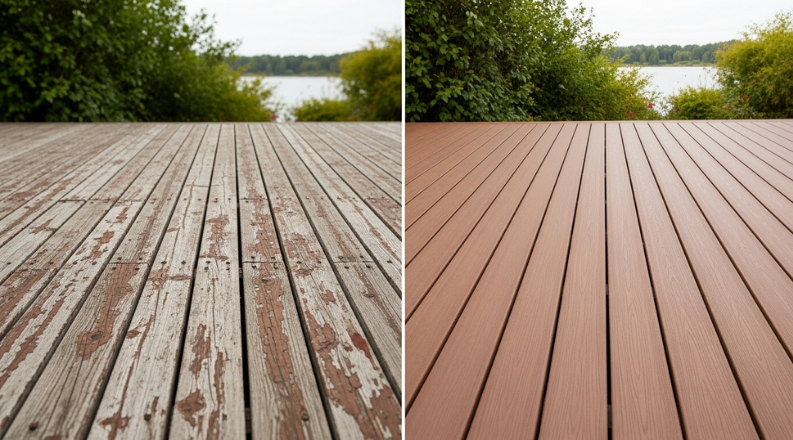Building a new deck or replacing an old one is a significant investment, and one of the most important decisions you’ll make is choosing the decking material. In Canada, the two most popular choices are traditional wood and modern composite decking. Each has its unique advantages and disadvantages, and the best option for you will depend on your priorities, budget, and desired level of maintenance.
Traditional Wood Decking:
- Pros:
- Natural Beauty: Many homeowners love the classic, natural look and feel of real wood. Species like cedar, pine, and pressure-treated lumber are common choices in Canada.
- Lower Initial Cost: Generally, wood decking has a lower upfront material cost compared to composites.
- Customizable: Wood can be easily stained or painted in any colour to match your home’s exterior.
- Cons:
- Higher Maintenance: Wood decks require regular maintenance, including cleaning, sanding, staining, and sealing (typically every 1-3 years) to prevent rot, insect infestation, warping, and splintering, especially in the varied Canadian climate.
- Susceptible to Elements: Wood can be prone to fading from UV exposure, and damage from moisture and temperature fluctuations.
- Shorter Lifespan (Potentially): Without consistent maintenance, the lifespan of a wood deck can be shorter than that of composite alternatives.
Composite Decking:
- Pros:
- Low Maintenance: This is a major selling point. Composite decking (made from a blend of wood fibers and recycled plastics) resists staining, scratching, fading, mold, and mildew. It doesn’t require sanding, staining, or sealing – just occasional cleaning with soap and water.
- Durability: Composites are designed to withstand harsh weather conditions, making them a great choice for Canadian climates. They won’t rot, warp, or splinter.
- Long Lifespan: Many composite decking products come with extensive warranties (25 years or more).
- Eco-Friendly Options: Many brands use recycled materials, making them a more sustainable choice.
- Cons:
- Higher Initial Cost: The upfront cost of composite decking is typically higher than wood.
- Can Get Hot: Some darker coloured composites can absorb heat and become quite hot in direct summer sun.
- Aesthetic: While composite technology has advanced significantly to mimic the look of real wood, some homeowners still prefer the authentic appearance of natural timber.
Making Your Choice:
Consider your budget, how much time you’re willing to dedicate to maintenance, and the aesthetic you desire. If a lower initial cost and the natural charm of wood are paramount, and you don’t mind the upkeep, wood might be for you. If low maintenance, long-term durability, and resistance to the elements are your top priorities, and you’re willing to invest more upfront, composite decking is likely the better option for your Canadian home.
Still unsure? Our team is here to help you weigh the options and choose the perfect decking material for your needs and vision.

